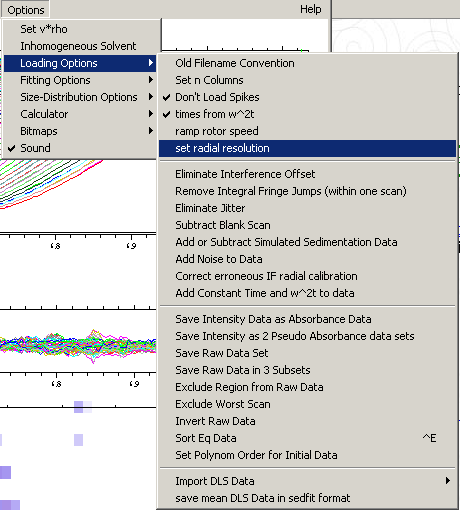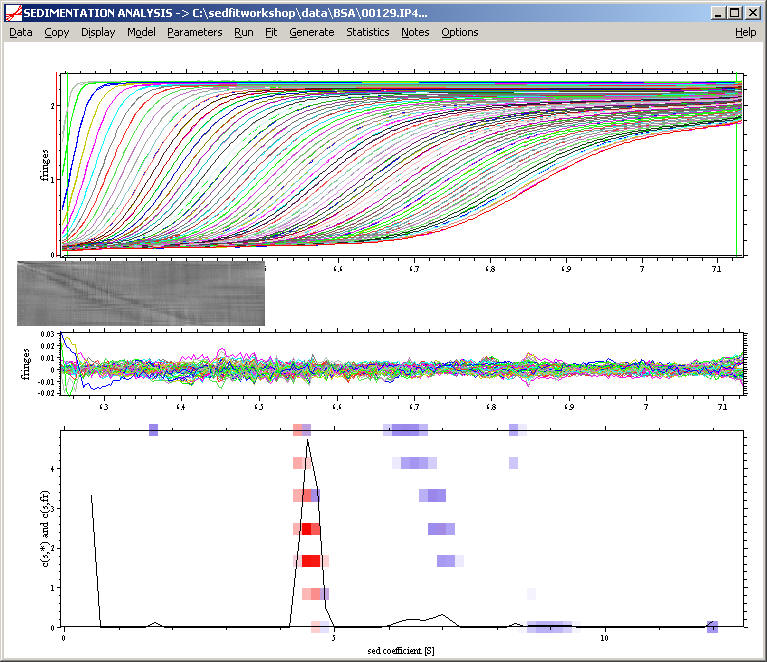
back to the tutorial main page
An alternative approach, which is entirely free of any assumptions regarding f/f0 is the two-dimensional size-and-shape distribution c(s,ff0).
First, we load a little less of the data, which makes the computational effort significantly smaller: Reload the data, select every 2nd data file. Then go the the Loading Options->Set Radial resolution:

Enter a value of 0.003:

This will speed up the calculations, since the computation time goes with the square of the number of data points. Since the boundaries are smooth, we don't need all data points to describe the sedimentation process. However, the full data set can be used again for a final analysis.
Switch to the model c(s,f/f0) with one discrete component.

Use the following parameters:

Do a run command, and you will get something similar to this:

This shows the c(s,ff0) distribution as a two-dimensional representation by color temperature, with the vertical axis showing ff0-values, from ff0min to ff0max, and the horizontal axis the s-values. The solid line is the general c(s,*) distribution, which is similar to the c(s), except that it does not make any assumptions on the frictional ratio.
Go back to the parameter box, and push the button s-M on the right-hand side. This will lead to the transformation to show the molar mass in the vertical axis:

It shows the molar mass values associated with each pair of s-ff0. Clearly, the molar mass of the monomer is well-determined, and the dimer is in the right ballpark, but there's not enough information in the data to determine the mass of the higher oligomers.
Push the button to show the M-ff0 distribution:

Here you can read the molar mass values on the horizontal axis and the ff0 values on the vertical axis. In this graph (as in the s-f/f0 graph), it becomes clear that the f/f0 values for each species are not very much different. This is the reason why c(s) works well.
This c(s,ff0) analysis can be used to check if the scale relationship assumptions of a single weight-average frictional ratio is warranted or not, or there it is known not to hold.